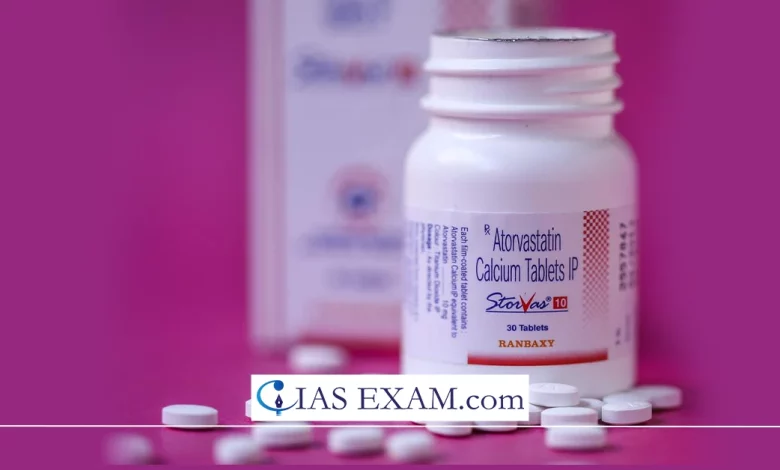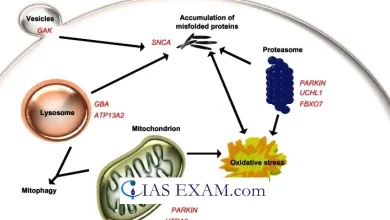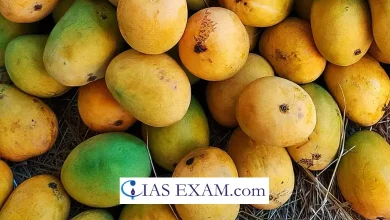Bile Acids Blunt Statin-Induced Diabetes
Syllabus: Science & Technology [GS Paper - 3]

Context
An experiment conducted by the Chinese proved that Ursodeoxycholic acid (UDCA) reversed the harmful effects of statins like insulin intolerance, and diabetes. Despite being a secondary bile acid, it has the potential to blunt statin-induced diabetes. It shows excellent results as far as prevention of these effects is concerned. Thus UDCA could be of significant benefit to the people of high cardiovascular risk who are on statins for treatment.
Ursodeoxycholic acid (UDCA), a secondary Bile Acid
- Ursodeoxycholic acid (UDCA), is secondary bile acid of the human body, and it is obtained from the processes of primary bile acids in intestines by some intestinal microorganisms.
- It is an important part of the fat regulation for our body as well as the absorption of dietary fats, fat-soluble vitamins.
- The medical community has been for years in study of UDCA and application as an active ingredient in medical treatments for hepatoprotective purpose, treating liver conditions such as cholestasis and gallstones.
- Moreover, UDCA has been found to be efficient in dealing with other disorders among which the gastrointestinal diseases and metabolic disorders occupy a special place.
- The role of curcumin as a therapeutic agent has expanded.
- Among its benefits, it may mitigate some of the side effects of statin drugs that could otherwise result in diabetes.
- On the aggregate, UDCA attains biological diversity which brings physiological and therapeutic relevance.
About Statins-Induced Diabetes
- Statin-induced diabetes describes the phenomenon of the occurrence of diabetes mellitus in patients taking the statins previously prescribed for managing blood cholesterol levels.
- However, statins successfully protect against cholesterol and thereby decrease cardiovascular risk; studies show they actually worsen diabetes risk, particularly among some people.
- The further underlying mechanism remains unclear, but it may possibly be explained by the role of insulin sensitivity in glucose metabolism.
- Diabetes that is regular blood glucose monitoring should be advised for individuals on statins especially those who have print factors.
- Management can include lifestyle changes such as diet modification, medication adjustment, and even statins discontinuation.
- The clinicians must strike the equilibrium between advantages and risks in situations, where the side effects are even more threatening than positive outcomes.
- The tasks that the patients may have before and after the operation should be taken into consideration too.
How UDCA blunts Statin-Induced Diabetes
- Statins impose diabetes via endogenous ways of management.
- UDCA becomes balancing on this along different metabolic pathways. It increases the insulin sensitivity, hence uptake of glucose into tissues decreasing and insulin resistance being reduced.
- Moreover, interference of UDCA with liver inflammation and by enhancing the liver’s performance limits statin-induced hepatotoxicity, which could aggravate insulin resistance as well.
- Moreover, UDCA is known to alter lipid metabolism, a process which could decrease the lipid accretion in tissues and improve glucose homeostasis.
- In brief, UDCA collaborates in several ways to alleviate the drawbacks of the statins on glucose metabolism, which is a potential adjunctive strategy to be used for preventing statin-induced diabetes.
Conclusion
- In the end, the Chinese study highlights the opportunity of Ursodeoxycholic acid (UDCA) in taking a statin-induced diabetes under control via enhanced insulin sensitivity and metabolic process modification. Apart from its ability to protect the liver, its therapeutic benefits are also worth investigating in other gastrointestinal and metabolic disorders.
- An Alternative approach mainly beneficial for cardiovascular risk patients who need statin therapy is UDCA treatment which could be added to the medication regime to lower the risk of side effects. Moreover, it is important to continue examining the exact mechanism of the drug and carry out more clinical studies in order to totally understand its full therapeutic potential and achieve better patient gains.
Source: The Hindu
Also read: Prediabetic Conditions
UPSC Main Practice Question
Q.Discuss the potential of Ursodeoxycholic acid (UDCA) in mitigating statin-induced diabetes, as demonstrated by a Chinese study. Evaluate its therapeutic benefits and implications for individuals at high cardiovascular risk. Support your answer with relevant examples and considerations.





.png)



